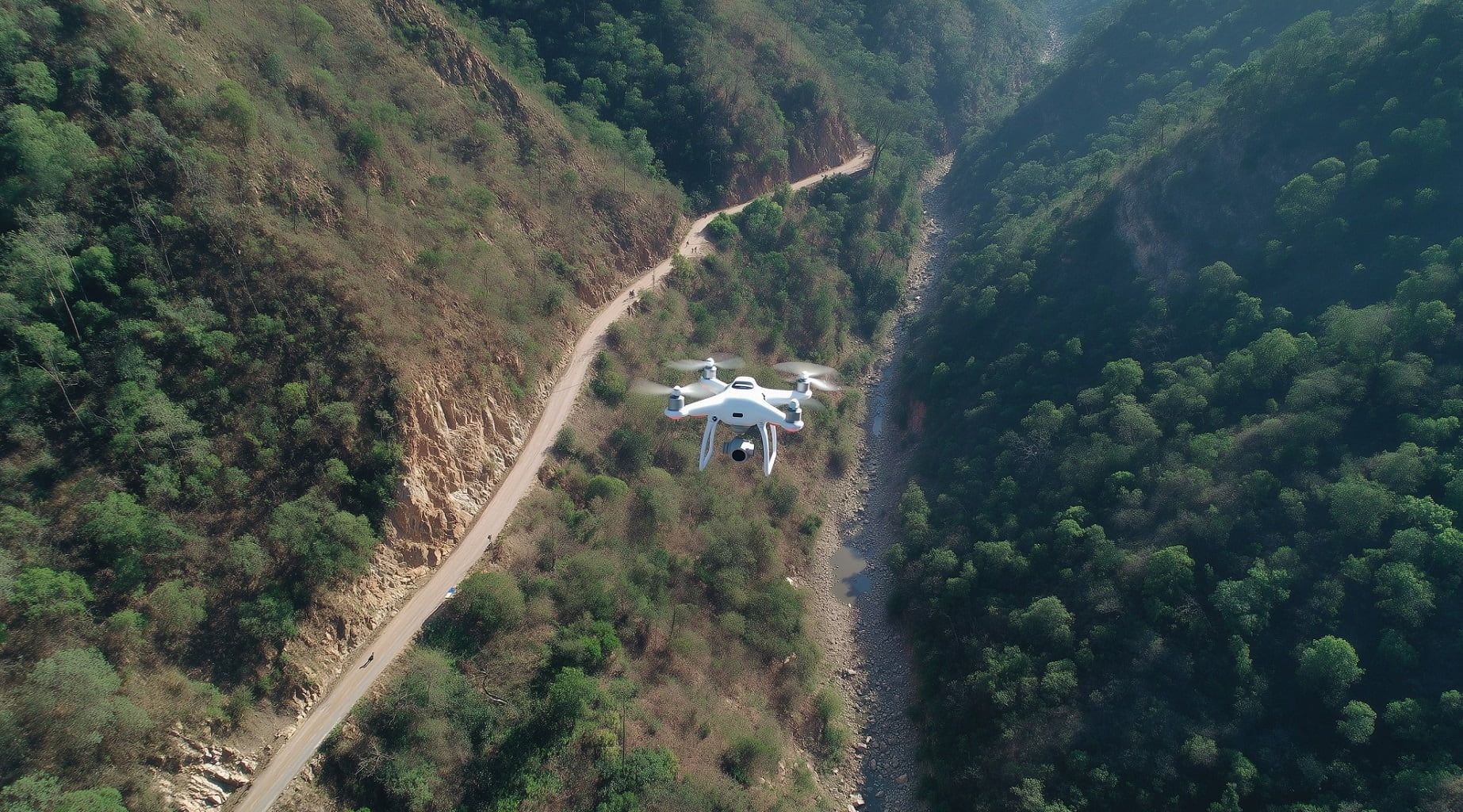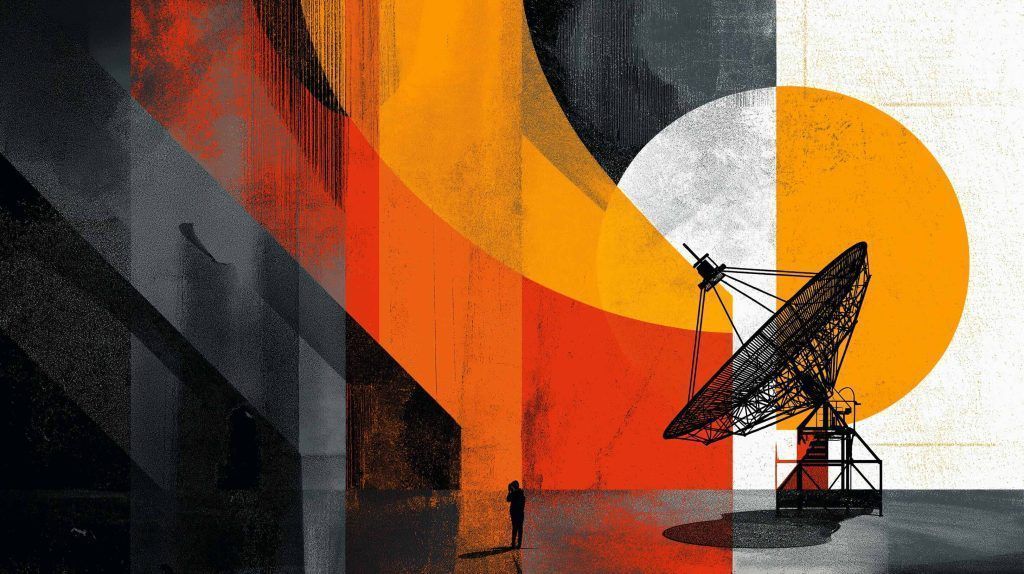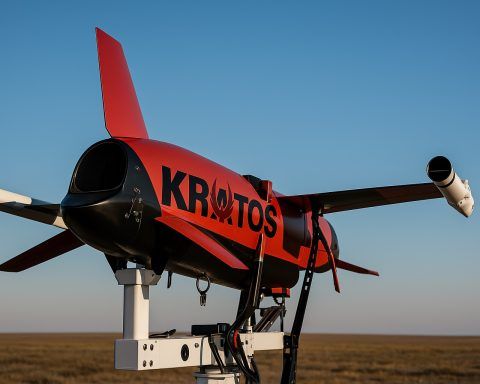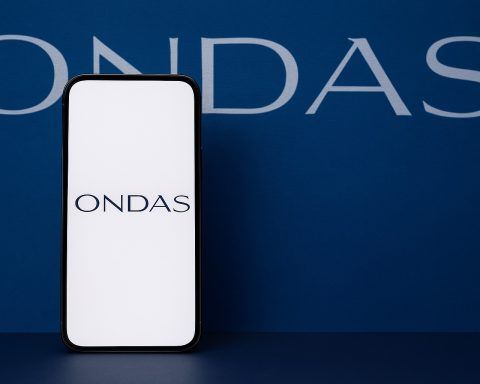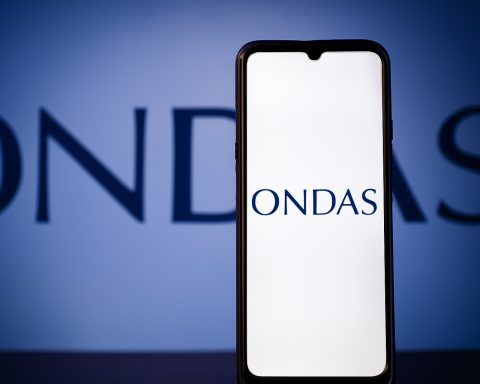- The NOM-107-SCT3-2019 standard, effective January 2020, defines three RPAS weight classes—Micro ≤2 kg, Light >2 kg up to 25 kg, and Heavy >25 kg—with operation categorized as Recreational, Private Non-Commercial, or Commercial.
- Drones over 250 grams must be registered in the Mexican Aeronautical Registry via AFAC’s RPAS Registration form (Appendix K of NOM-107), with registrations valid for three years and requiring ownership proof, the drone’s serial number, and a Mexican citizenship or residency ID (foreign nationals cannot register).
- As of 2024, pilots operating larger or commercial drones must hold an RPAS pilot license; eligibility includes Mexican birth, at least 18 years old, completion of training and exams, aeronautical medical, a minimum number of supervised flight hours, a clean criminal record, and a license valid for three years.
- Commercial or non-recreational use requires AFAC operating authorization, demanding proof of drone registration, drone details, current liability insurance, an Aeronautical Safety/Risk Assessment, and, for large drones, an airworthiness certificate; only Mexican citizens by birth may apply for these authorizations.
- Operational limits include a 120-meter (400-foot) altitude cap, daylight-only flying with VLOS and prohibitions on FPV/BLOS without authorization, and mandatory distances of 9.2 km from controlled airports, about 3.7 km from smaller airstrips, and 900 m from helicopter pads.
- Drones cannot operate in prohibited or restricted airspace, must avoid over crowds or sensitive properties, and filming at archaeological sites requires explicit permission with INAH permits that can cost around MX$10,900 per day.
- The 2025 Federal Law on the Protection of Personal Data strengthens privacy obligations for drone operations, requiring data minimization, secure storage, encryption for sensitive footage, and consent when necessary, while prohibiting capturing private individuals without consent.
- Insurance is not required for hobbyists under 2 kg, but commercial drone flights require third-party liability insurance, with AFAC requesting proof when applying for authorizations, and typical coverage often around USD 1 million.
- Foreign operators face strict restrictions: registration is unavailable to foreigners, foreign-registered drones or foreign pilots generally cannot operate without a bilateral agreement, and enforcement has tightened around tourist areas, though some tourists fly sub-250 g drones cautiously.
- Penalties for non-compliance can include fines up to MX$403,000 (about USD 20,000), equipment seizure, license suspension or revocation, and possible criminal charges in extreme cases.
Overview of Drone Regulations in Mexico
Mexico allows drone operations but under strict regulations enforced by the Federal Civil Aviation Agency (Agencia Federal de Aviación Civil, AFAC) [1]. Drones (Remotely Piloted Aircraft Systems, RPAS) are regulated by Mexico’s Civil Aviation Law and its regulations (Reglamento de la Ley de Aviación Civil), as well as the Official Mexican Standard NOM-107-SCT3-2019 [2] [3]. NOM-107-SCT3-2019, effective since January 2020, established the requirements for operating RPAS in Mexican airspace, providing a legal framework for safe integration of drones with traditional aircraft [4] [5].
Under this framework, drones are categorized by weight and use. The three weight classes defined are Micro (≤2 kg), Light (>2 kg up to 25 kg), and Heavy (>25 kg) [6]. Additionally, operations are classified by purpose: Recreational, Private Non-Commercial (e.g. corporate or personal use not for compensation), or Commercial [7]. Broadly, lighter drones and purely recreational uses face fewer requirements, while heavier drones and any commercial use are subject to stringent rules, licensing, and authorizations. AFAC is the authority overseeing drone compliance, and all drone pilots (Mexican or foreign) must adhere to Mexican airspace rules and any local regulations when operating in the country [8].
Recreational vs. Commercial Drone Operations
Mexican law draws clear distinctions between recreational hobby flying and commercial (or other non-recreational) drone operations:
- Recreational Use: Flying for personal enjoyment has relatively lighter rules, especially for small drones. For example, micro drones under 2 kg can be flown recreationally without prior AFAC authorization [9] [10]. However, recreational pilots must still follow all safety restrictions (daylight flying, stay in allowed airspace, etc.) and cannot endanger people or property. Drones 2–25 kg (Light class) are not allowed for casual backyard flying anywhere – recreational flights for these must be confined to designated model aircraft clubs or fields [11] [12]. Large drones (>25 kg) are generally not intended for recreational use due to the high risk and are seldom authorized for hobby flying.
- Commercial and Non-Recreational Use: Drones used for any business, professional purpose, or any flights not purely for fun face additional requirements. All commercial drone operations require official authorization from AFAC under NOM-107 [13]. Micro drones (<2 kg) used commercially don’t need advance flight authorization, but the operator must carry third-party liability insurance and meet other conditions [14]. Light drones (2–25 kg) used commercially must be registered with AFAC and display a registration/license plate, and each individual flight may need prior authorization from authorities [15]. Heavy drones (>25 kg) have the strictest rules: they require registration, specific AFAC-approved terms and conditions for operation, and the operator must hold a pilot’s license [16]. In effect, heavy/commercial drones are treated almost like manned aircraft.
In summary, recreational flyers with small drones have the most freedom (within safety limits), whereas commercial operators and anyone flying larger drones must go through registration, obtain operating permits, and in some cases pilot licensing. Flying a drone for commercial purposes without complying with these additional requirements is illegal and subject to penalties.
Licensing and Registration Requirements
Drone Registration: Mexico mandates that all drones over 250 grams (0.55 lbs) be registered in the Mexican Aeronautical Registry before operation [17]. Registration is handled by AFAC and is done online via the “RPAS Registration” form (Appendix K of NOM-107) [18]. To register, an applicant must provide documentation of ownership, the drone’s specifications/serial number, and personal identification [19]. Importantly, registration requires a valid official ID that proves Mexican citizenship, or legal residency, which means foreign nationals cannot register a drone in Mexico under current rules [20]. (The registry system will not accept foreign passports or IDs.) Upon successful registration, a registration folio/number is issued and must be marked on the drone, and registrations are valid for three years [21].
Remote Pilot Licensing: For a long time Mexico lacked a formal “drone pilot license,” but as of 2024 the framework has been clarified. Drone pilots operating larger or commercial drones are required to obtain an RPAS pilot license/certificate, with criteria set by AFAC [22]. To be eligible, one must be Mexican by birth and at least 18 years old [23]. Obtaining the license involves completing training courses and passing theoretical and practical exams administered by AFAC or certified aviation schools [24] [25]. Applicants need to pass a rigorous aeronautical medical exam (demonstrating good health), log a minimum number of supervised flight hours, and pay applicable exam fees (about US $150 for the exams) [26]. Additional requirements include a clean criminal record and, as noted by earlier policy, even a military service release card for men (a cartilla militar), and at least a high school education [27]. A drone pilot license in Mexico, once issued, is typically valid for 3 years before renewal [28] [29].
Operating Authorizations: Beyond registering the drone and licensing the pilot, any commercial or non-recreational drone use requires an operating authorization from AFAC (sometimes called an RPAS Operating Certificate or permit). To obtain this, the operator must submit to AFAC: proof of the drone’s registration, details about the drone and its intended use, proof of current liability insurance, an Aeronautical Safety/Risk Assessment for the operation, and for large drones an airworthiness certificate [30]. Notably, only Mexican citizens (by birth) are allowed to apply for these operational authorizations [31]. There is no general government fee for the operating authorization itself [32], but costs will be incurred for pilot licensing exams, registration processing, and possibly drone import duties if bringing equipment into Mexico [33].
In summary, hobbyist Mexican flyers with small drones have no licensing requirement but must register drones over 250g. Commercial operators must ensure the drone is registered, the pilot is licensed (if required by drone size/type), and an AFAC operations permit is secured. All these requirements effectively bar foreign tourists from flying larger drones since they cannot fulfill the citizenship and registration conditions.
Airspace Restrictions and No-Fly Zones
Mexico imposes strict airspace rules to ensure safety and privacy. Drone pilots must abide by the following operational limits and no-fly zones:
- Altitude Limit: Drones may not fly higher than 120 meters (400 feet) above ground level [34]. This keeps drones well below most manned aircraft flight paths.
- Visual Line of Sight: You must keep your drone within visual line-of-sight (VLOS) at all times, and no farther than about 457 meters (1,500 feet) from the operator [35]. First-person view (FPV) or beyond-line-of-sight flying is not permitted without special authorization.
- Aerodrome Safeguards: It is strictly forbidden to fly near airports and airfields. Drones must stay at least 9.2 km (5 nautical miles) away from any controlled airport [36]. For smaller airstrips without control towers, AFAC recommends a 3.7 km distance (about 2.3 miles), and at least 900 m (0.9 km) away from any helicopter landing pads [37]. These large no-fly radii are to prevent any interference with manned aircraft takeoffs and landings.
- Over People and Crowds:Flying over people is prohibited. Operators may not intentionally fly over or within a close distance of unprotected people or large gatherings (often interpreted as >12 people) [38]. Flights above open-air assemblies, sports events, concerts, parades, or busy urban streets are not allowed due to the risk of injury. You must also avoid flying over sensitive property like private homes, schools, or hospitals to respect privacy and safety.
- Night Operations:Drone flights are allowed only during daylight hours. Flying at night or in low-visibility conditions is prohibited unless a special written exemption is granted by AFAC in extraordinary cases [39]. All operations should take place between official sunrise and sunset.
- Restricted Areas: Drones cannot be flown in officially designated prohibited or restricted airspace. This includes near military bases, law enforcement facilities, government buildings, and border zones. For example, flying in or around strategic installations or critical infrastructure without permission can lead to serious penalties [40]. Always consult Mexico’s aeronautical charts or AFAC notices for any temporary flight restrictions or permanent no-fly zones.
- Historical and Protected Sites: Mexico has many archaeological zones, monuments, and ecological reserves where drone use is either banned or heavily restricted. Drone flights over historic sites (e.g. Chichén Itzá, Teotihuacán, archaeological ruins) are forbidden without explicit permission [41]. The National Institute of Anthropology and History (INAH) requires a permit to film or photograph at its sites, typically for commercial projects, and charges hefty fees (on the order of MX$10,900 per day) [42]. Tourists should assume no drones at ruins, museums, or national parks unless they have obtained prior written approval.
- Other Operational Limits: Drones must not drop or carry dangerous objects. It is illegal to drop any object from a drone that could harm people or property [43]. There is also a speed restriction: pilots should not exceed the maximum safe speed for their drone’s weight class (as defined by the manufacturer and regulations) [44]. Finally, drones should yield right-of-way to all manned aircraft and avoid creating any hazard to other air traffic.
Before flying, pilots should check for any local bylaws or park rules that might impose additional restrictions. Some tourist resorts, city centers, or events in Mexico have their own drone bans or requirements – for instance, many hotels and resorts do not allow guest drone flights on premises [45]. By following these airspace rules and keeping a safe distance from sensitive areas, drone operators can avoid incidents and legal trouble.
Rules for Foreign or Tourist Drone Operators
Foreigners face significant restrictions when it comes to flying drones in Mexico. Mexican drone law does not easily accommodate tourist or foreign operators:
- Registration and Weight Limits: As noted, all drones heavier than 250 g must be registered, and registration is only available to Mexican citizens or residents [46]. Foreign visitors cannot register drones in Mexico, which means they legally cannot fly any drone 250 g or above. In practice, this limits tourists to the smallest category of drones. Many travel guides note that visitors are effectively restricted to sub-250g drones (like the DJI Mini series) for personal recreational use [47]. These tiny drones do not require registration. However, even with a <250g drone, foreigners must still obey all the operational rules (no flying over people, no restricted areas, etc.), and there is still legal ambiguity about their use.
- Prohibition on Foreign Operators: Mexico’s official policy is actually more strict than just a weight limit. AFAC explicitly prohibits drone operations by foreign-registered drones or foreign pilots unless a special agreement is in place. NOM-107-SCT3-2019 states that no RPAS with foreign registration or operated by a foreign person may operate in Mexico without a bilateral agreement between Mexico’s aviation authority and the operator’s home country [48]. In simpler terms, a tourist or any non-Mexican pilot is not authorized to fly a drone in Mexican airspace. The only exceptions have been rare cases such as scientific research projects, where a foreign operator obtained special permission from AFAC along with other agencies (e.g. Mexico’s geography institute and the Ministry of Defense) [49].
- Enforcement in Practice: While the law is strict, on the ground many tourists have flown small drones discreetly. Mexican authorities historically focused enforcement on larger drones or obvious commercial use. A foreign traveler flying an unregistered <250g drone quietly for personal photos (outside of no-fly zones) might not draw attention. This is not a legal endorsement – it’s simply the reality that enforcement is spotty for tiny drones. Officially, foreign operators are “rarely allowed” to fly drones in Mexico and should seek permission from AFAC if they intend to do anything beyond casual use [50] [51]. Travelers caught flying a larger drone without authorization could have the drone confiscated and face penalties.
- Recommendations for Tourists: If you are not a Mexican citizen or resident and you still decide to bring a drone:
- Keep it under 250 grams. Anything larger is illegal to operate since you cannot register or get a license for it as a foreigner.
- Carry proof of purchase and import if bringing the drone through customs. Drones are generally allowed in personal luggage, but it’s wise to declare it. Mexico does not require an import permit for one personal drone, but customs might ask about its value.
- Follow all local rules diligently. Do not fly in crowded tourist areas, respect signs that say “No Drones”, and avoid high-profile locations (beaches with many people, archaeological sites, airports) to prevent complaints.
- Consider local assistance. For any professional project, partner with a Mexican-licensed drone operator. Foreign companies often hire local certified drone pilots rather than trying to navigate the restrictive rules on their own.
In summary, Mexico is one of the more restrictive countries for foreign drone pilots. Unless you have a very light drone and keep a low profile, the legal framework essentially makes Mexico a no-fly zone for non-Mexican operators [52] [53]. Always check the latest AFAC guidelines before traveling with a drone, as policies can evolve.
Insurance Requirements
While hobbyist drone fliers are not legally required to have insurance, Mexico strongly recommends having liability insurance for any drone operation [54] [55]. For commercial and institutional drone use, insurance is effectively mandatory. In fact, obtaining the AFAC operating authorization for non-recreational drones includes showing proof of a third-party liability insurance policy in force [56]. This insurance should cover potential damages or injuries caused by the drone to people, property, or other aircraft.
Key points regarding insurance:
- Recreational Pilots: By law, if you fly purely for fun and your drone is under 2 kg, you are not forced to carry insurance. However, given the risk of accidents (a drone could crash into a car or injure someone), operators are urged to carry coverage. Some travel insurance policies or homeowner’s insurance might include drone liability, or pilots can purchase specialty drone liability insurance for the trip or event. It’s better to be safe, as even a small drone can cause costly damage or injury.
- Commercial Operators: All commercial drone flights must have insurance coverage. AFAC will ask for an insurance certificate when you register and apply for any flight authorizations [57]. Typically, this would be a liability policy that specifically covers aerial operations. The required coverage amount isn’t specified in NOM-107, but it should be sufficient to cover worst-case damages (many companies opt for policies covering at least $1 million USD in liability for commercial drone work). Commercial operators should also consider hull insurance for their drone equipment, though that’s not legally required.
- Foreign Operators: If a foreign pilot does manage to get special permission to operate (or informally flies a small drone), standard travel insurance likely does not cover drone liabilities. Tourists in that situation should look for short-term drone insurance apps or services that offer coverage in Mexico. Moreover, if a drone is required to be registered (hence insured) and it isn’t, any accident could leave the operator personally liable and possibly subject to legal action.
In summary, insurance is a critical aspect of compliance. Mexico wants to ensure that if a drone causes harm, there is financial responsibility in place. Not having insurance when required can not only violate the law but also expose a drone pilot to huge out-of-pocket costs if an incident occurs. For peace of mind, all drone users – hobbyist or professional – should secure at least basic third-party liability insurance before flying in Mexico [58].
Privacy and Data Protection Considerations
Mexico places a strong emphasis on protecting privacy in the context of drone use. Drone operators must be mindful of Mexican privacy laws and respect individuals’ rights to not be surveilled or recorded without consent [59] [60]. Key privacy-related rules and best practices include:
- Consent for Recording:It is generally prohibited to capture images, video, or audio of private individuals without their consent [61]. This means a drone pilot should avoid flying over private homes or backyards and must not hover to film people in their private spaces. If a drone will record someone (even in a public place) in a recognizable way, the safe approach is to obtain that person’s permission.
- Private Property:Do not fly over private property to take photos/videos without the owner’s permission [62]. Flying a drone with a camera over someone’s fenced yard, an apartment balcony, or through a neighborhood could be seen as an invasion of privacy. Mexican civil law allows property owners to take action if their privacy is violated, and authorities could impose sanctions for systematic surveillance by drone.
- Avoidance of Surveillance: Drones should not be used for persistent surveillance or data collection on individuals. Activities like following a person with a drone, peeking into windows, or recording sensitive facilities (like schools or government buildings) can breach privacy and security laws. AFAC’s privacy guidance emphasizes that drone operations should have a legitimate purpose and not amount to “indiscriminate surveillance” [63].
- Public Spaces: Even in public areas, operators should be considerate. It’s advised to maintain a reasonable distance from people so as not to capture detailed identifiable footage of bystanders [64]. For example, if filming a city plaza or beach, focus on the landscape and avoid hovering directly over crowds. Commercial operators doing prolonged filming in public should even consider posting informational signage to alert people that a drone is recording overhead [65] – this transparency can help address privacy concerns.
- Data Protection: If a drone does collect personal data (e.g., imagery of people, license plates, etc.), the operator becomes a de facto data controller under Mexican law. Mexico has a robust data protection regime (recently updated in 2025) that requires anyone handling personal data to protect it and use it only for legitimate, consented purposes [66] [67]. Drone pilots should implement data minimization (collect only what you need) and secure storage for any recorded footage [68]. Sensitive data should be encrypted and not kept longer than necessary, and any privacy-sensitive footage (faces, addresses) should be blurred or anonymized if used or published.
- Legal Consequences: Violating privacy can lead to complaints or even legal action. If a person feels their privacy was intruded upon by a drone, they can report it. The Federal Law on Protection of Personal Data and other statutes provide for fines and penalties if personal data (which can include someone’s image) is misused or obtained unlawfully. Additionally, local laws may criminalize “peeping” or harassment using cameras, including drones. Always err on the side of caution: when in doubt, don’t film or at least obtain consent.
In practice, a respectful approach is best. For instance, a recreational pilot taking aerial shots of a scenic town should try to avoid clearly capturing people in their yards or children playing in a pool. Commercial drone shoots (e.g., real estate or events) should include privacy releases from anyone who might be identifiable in the footage. By following these principles, drone operators can enjoy their aerial photography without infringing on privacy rights – a win-win that keeps operations lawful and neighbors happy [69] [70].
Penalties for Violations
Mexico backs up its drone rules with significant penalties. If you violate drone regulations, you can face fines, confiscation of equipment, and even legal prosecution depending on the severity of the offense [71]. Here are some consequences of non-compliance:
- Fines: Financial penalties for breaking drone laws in Mexico can be steep. For example, operating a drone without the required license or authorization can incur fines of up to MX$403,000 (approximately USD $20,000) [72]. This huge fine was established when the drone regulations took effect and reflects how seriously authorities take unauthorized drone flights. Lesser infractions (like flying in a restricted area without causing an incident) may result in smaller fines, but they can still be in the tens of thousands of pesos. Each violation (unregistered drone, no insurance, flying at night, etc.) may compound the penalties.
- Equipment Seizure: If caught in violation, authorities (AFAC inspectors or police) may confiscate your drone on the spot. Especially for foreign operators or unregistered drones, the drone can be taken as evidence and might not be returned. Flying in prohibited zones (e.g., near an airport or a protected site) almost guarantees your drone will be seized and you’ll face investigation [73].
- License Suspension/Revocation: For those who hold a drone pilot license or any aviation certificate, breaking the rules can lead to suspension or cancellation of your license. AFAC can withdraw operating authorizations if an operator is found to be non-compliant or reckless. For instance, a commercial pilot flying in unsafe weather or over crowds could have their license suspended in addition to fines [74].
- Criminal Charges: In extreme cases, drone violations can result in criminal charges. If a drone interferes with manned aircraft or causes an accident, the operator could be prosecuted under aviation safety laws. Endangering an aircraft is a serious crime worldwide. Also, using a drone for illicit surveillance or carrying contraband would bring in criminal penalties. The Civil Aviation Law and Mexico’s Penal Code include provisions that could be applied if a drone operation negligently or willfully endangers lives. While jail time would be rare and reserved for egregious cases (like a drone causing a plane crash or being used in a crime), it remains a possibility for worst-case scenarios.
- Additional Penalties: If you violate privacy (as discussed above), you could face separate fines under data protection or local privacy laws. Also, local municipalities might levy penalties for disturbing the peace if a drone is flown recklessly. The broad rule is that all federal, state, and local laws apply to drone activities [75], so violations can have multiple dimensions of consequences.
Enforcement: AFAC works with other agencies (like law enforcement and aviation authorities) to enforce drone laws. They have been increasing monitoring of restricted areas (for example, airports now often have drone detection systems). Many popular tourist zones also have police on the lookout for illegal drone flights. Understanding these penalties is crucial – the cost of a fine or losing your drone far outweighs any benefit of taking an illegal risk. By complying with regulations, drone pilots can avoid “flying into trouble” and the hefty costs that come with it [76].
Recent Legal Updates and Changes in Drone Regulations
The core of Mexico’s drone law is the NOM-107-SCT3-2019 standard and the supporting civil aviation regulations, which came into full effect in 2020. Since then, no sweeping new drone legislation has been enacted, but there have been a few developments and clarifications up to 2025:
- Implementation of Licensing (2019–2021): After the NOM-107 standard was published, Mexican authorities signaled that commercial drone pilots would need to be licensed. By late 2018 it was announced that from December 1, 2018 onward, flying without a license could incur heavy fines [77]. However, the process to obtain the license was slow to roll out. Over 2019–2020, AFAC built the framework for training and testing drone pilots. As of 2024, the remote pilot license requirements are formally in place (with AFAC partnering with certified schools for courses) [78]. This was a significant change from prior years when no such certification existed. The criteria (Mexican, 18+, education, medical exam, etc.) have been consistent with initial proposals, and now licenses are being issued for eligible operators. This means Mexico has entered a new era where drone operation is more professionalized and regulated.
- Online Registration System: AFAC launched an online system for drone registration and permit applications. Appendix K of the NOM provides the forms, and AFAC’s website (gob.mx) updated its RPAS portal to guide users through registration [79]. By 2025, registering a drone (for those eligible) has become more streamlined, and the Mexican Aeronautical Registry is actively maintaining drone records. Users receive digital proof of registration which must be renewed every 3 years.
- Tourist Awareness and Crackdowns: In recent years, Mexico has increased awareness efforts about its ban on foreign drone operations. There have been reports of drones being confiscated from unwitting tourists at places like Chichén Itzá or national parks. In 2023, some travelers noted enhanced signage at tourist sites indicating drones are not allowed. The legal stance that foreigners cannot fly drones has not been relaxed; if anything, enforcement against unlawful foreign-operated drones has become stricter. Tourists in 2025 are more likely to be told “no drones” by authorities if they attempt it in restricted areas.
- Privacy Law Update (2025): A major development indirectly affecting drone operations is Mexico’s new Federal Law on the Protection of Personal Data (FLPPD) enacted in March 2025 [80]. This law reformed how personal data and privacy are treated. While it doesn’t single out drones, it reinforces that capturing or handling personal data (including images of people) comes with obligations. Drone operators, especially businesses, must be mindful of this and possibly update their privacy practices (e.g. providing privacy notices if doing extensive video recording). The emphasis on privacy in 2025’s legal landscape dovetails with the AFAC guidelines that drone pilots respect individual privacy rights during operations [81].
- Technological Adaptations: Globally, drone regulation is evolving with technologies like remote identification and UAS traffic management. Mexico is observing these trends through its participation in ICAO. As of 2025, Mexico has not yet mandated Remote ID transmitters for drones (unlike the US or EU), but future regulations may incorporate such requirements to enhance airspace awareness. Any drone pilot operating in Mexico should keep an eye on AFAC announcements for modernizations of the rules in line with international standards.
- No-Fly Zones Updates: AFAC periodically updates the list of restricted areas via NOTAMs (Notices to Airmen/Air Missions) and circulars. For instance, drone flights near the presidential residence or certain event venues can be temporarily prohibited. In late 2024, there were temporary restrictions during high-profile events (like the Independence Day celebrations in central Mexico City). While these are not permanent law changes, they reflect an ongoing active management of drone airspace. Pilots are expected to check for any current restrictions or “NO DRONE ZONE” notices before flying on a given day.
In conclusion, the legal framework from 2019 remains the backbone of Mexico’s drone laws in 2025. The changes we’ve seen are largely in enforcement intensity and procedural clarity (licensing, registration processes), rather than new laws. It is crucial for drone operators to stay informed through official channels (AFAC’s website and press releases) because the drone regulatory environment continues to mature. By 2025, Mexico has fully moved from a lax era into a phase of rigorous control — and further updates (like embracing new tech and possibly relaxing rules for foreigners through agreements) may be on the horizon as drone use in society grows. For now, anyone flying in Mexico should adhere closely to the established rules to fly safely and legally in this jurisdiction [82].
References
1. uavcoach.com, 2. eaglepubs.erau.edu, 3. www.ibanet.org, 4. eaglepubs.erau.edu, 5. eaglepubs.erau.edu, 6. drone-laws.com, 7. www.ibanet.org, 8. drone-laws.com, 9. drone-laws.com, 10. drone-laws.com, 11. drone-laws.com, 12. drone-laws.com, 13. www.lexology.com, 14. drone-laws.com, 15. drone-laws.com, 16. drone-laws.com, 17. uavcoach.com, 18. drone-laws.com, 19. uavcoach.com, 20. uavcoach.com, 21. uavcoach.com, 22. www.lexology.com, 23. www.lexology.com, 24. themazatlanpost.com, 25. www.lexology.com, 26. www.lexology.com, 27. themazatlanpost.com, 28. www.lexology.com, 29. www.lexology.com, 30. www.lexology.com, 31. www.lexology.com, 32. www.lexology.com, 33. www.lexology.com, 34. uavcoach.com, 35. uavcoach.com, 36. uavcoach.com, 37. drone-laws.com, 38. uavcoach.com, 39. drone-laws.com, 40. www.flyeye.io, 41. uavcoach.com, 42. uavcoach.com, 43. uavcoach.com, 44. uavcoach.com, 45. uavcoach.com, 46. uavcoach.com, 47. uavcoach.com, 48. www.lexology.com, 49. www.lexology.com, 50. drone-laws.com, 51. drone-laws.com, 52. drone-laws.com, 53. www.lexology.com, 54. drone-laws.com, 55. drone-laws.com, 56. www.lexology.com, 57. www.lexology.com, 58. drone-laws.com, 59. www.flyeye.io, 60. www.flyeye.io, 61. www.flyeye.io, 62. www.flyeye.io, 63. www.flyeye.io, 64. www.flyeye.io, 65. www.flyeye.io, 66. www.flyeye.io, 67. www.littler.com, 68. www.flyeye.io, 69. www.flyeye.io, 70. www.flyeye.io, 71. www.flyeye.io, 72. themazatlanpost.com, 73. www.flyeye.io, 74. www.flyeye.io, 75. drone-laws.com, 76. www.flyeye.io, 77. themazatlanpost.com, 78. themazatlanpost.com, 79. drone-laws.com, 80. www.littler.com, 81. www.flyeye.io, 82. www.flyeye.io
